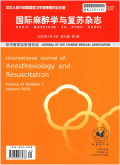青少年特发性脊柱侧弯后路矫形术后输血的危险因素分析:一项单中心回顾性分析
Risk factors for allogenic transfusion after posterior correction surgery for adolescent idiopathic scoliosis
摘要目的 探究青少年特发性脊柱侧弯(adolescent idiopathic scoliosis,AIS)后路矫形术后输血的危险因素. 方法 全身麻醉下择期行AIS后路矫形术的患者936例(男147例,女789例),年龄11~18岁,平均(14.4±1.7)岁,按术后是否予输血治疗将患者分为两组:术后输血组(188例),术后未输血组(748例).记录术前Hb、Cr、BUN、凝血指标、BMI、ASA分级、术前Cobb角、术中出血量、手术时间、截骨、氨甲环酸的使用、椎体融合数、术中输血量、术后输血信息及术后3d引流量,采用单因素分析及二分类Logistic回归分析筛选AIS后路矫形术后输血相关的危险因素. 结果 术后188例患者(20.1%)需要输注悬浮红细胞;单因素分析中,术前Hb、术前Cobb角、BMI、手术时间、术中出血量、椎体融合数、术后引流量、性别、ASA分级、术中是否使用氨甲环酸差异有统计学意义(P<0.05).在二分类Logistic回归分析中,男性[比值比(odds ratio,OR)=2.258、95%CI1.266~4.028]、椎体融合数>12(OR=1.587、95%CI 1.070~2.353)、术后引流量>515 ml(OR=2.025、95%CI 1.409~2.911)、术前Hb低于128 g/L (OR=1.956、95%CI 1.356~2.820)均为术后输血的独立危险因素,术中使用氨甲环酸(OR=0.497、95%CI 0.266~0.930)为术后输血的保护性因素. 结论 AIS后路矫形术后总体输血率为20.1%;男性、椎体融合数>12、术后引流量>515 ml、术前Hb<128g/L均为术后输血的独立危险因素,术中使用氨甲环酸为术后输血的保护性因素.
更多相关知识
abstractsObjective To investigate the incidence and risk factors for allogenic transfusion after posterior correction surgery for adolescent idiopathic scoliosis (AIS).Methods We retrospectively analyzed 936 patients (147 male and 789 female) undergoing posterior correction surgery for AIS.The patients,aged (14.4±1.7) (11-18) years,were divided into two groups:postoperative blood transfusion group (n=188) and postoperative non-transfusion group (n=748).The preoperative blood assay and physical examination were performed,and information about the surgery and treatment was collected.Potential risk factors for postoperative allogenic transfusion were evaluated by univariate and multivariate regression analysis.Results Postoperative allogenic transfusion was performed in 188 (20.1%) patients undergoing posterior correction surgery for AIS.Univariate analysis showed that Hb levels,Cobb angle and BMI before operation,estimated blood loss during operation,operation time,tranexamic acid (TXA),number of fused levels,postoperative drainage volume,ASA score,and gender had significant effects on postoperative allogenic transfusion.Logistic regression analysis identified male [odds ratio (OR)=2.258,95%CI 1.266-4.028],the number of fused levels>12(OR=1.587,95%CI 1.070-2.353),preoperative hemoglobin lower than 128 g/L (OR=1.956,95%CI 1.356-2.820),postoperative drainage volume>515 ml (OR=2.025,95%CI 1.409-2.911),are influencing factors for postoperative allogenic transfusion,the use of TXA (OR=0.497,95%Cl 0.266-0.930) is the protective fator for it.Conclusions The allogenic transfusion rate after posterior correction surgery for AIS was 20.1% in this study.Male,the numbers of fused levels>12,postoperative drainage volume>515 ml,preoperative Hb<128 g/L are risk factors for postoperative allogenic transfusion,the use of TXA is the only protective fctor for postoperative allogenic transfusion.
More相关知识
- 浏览224
- 被引8
- 下载104


相似文献
- 中文期刊
- 外文期刊
- 学位论文
- 会议论文



 换一批
换一批 换一批
换一批



